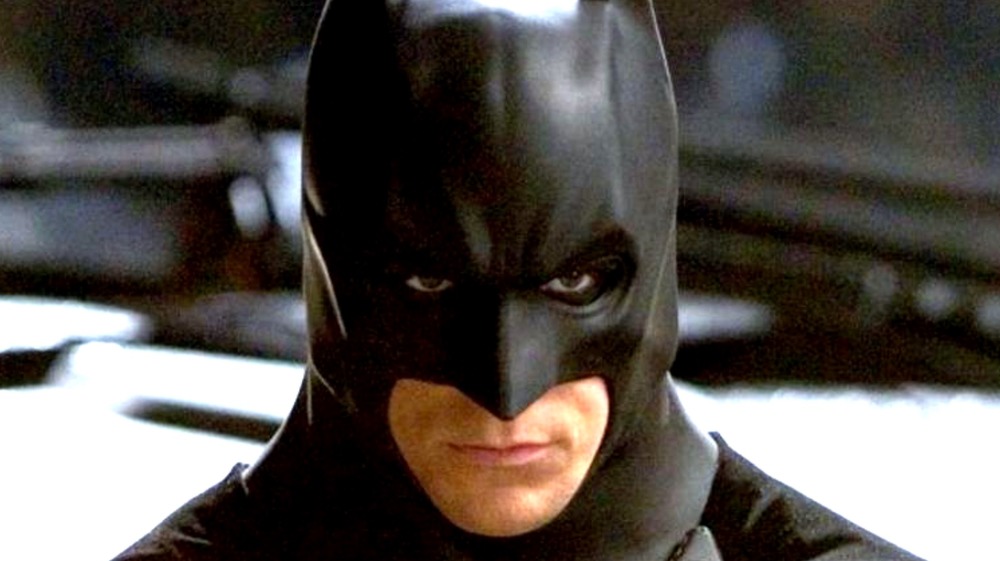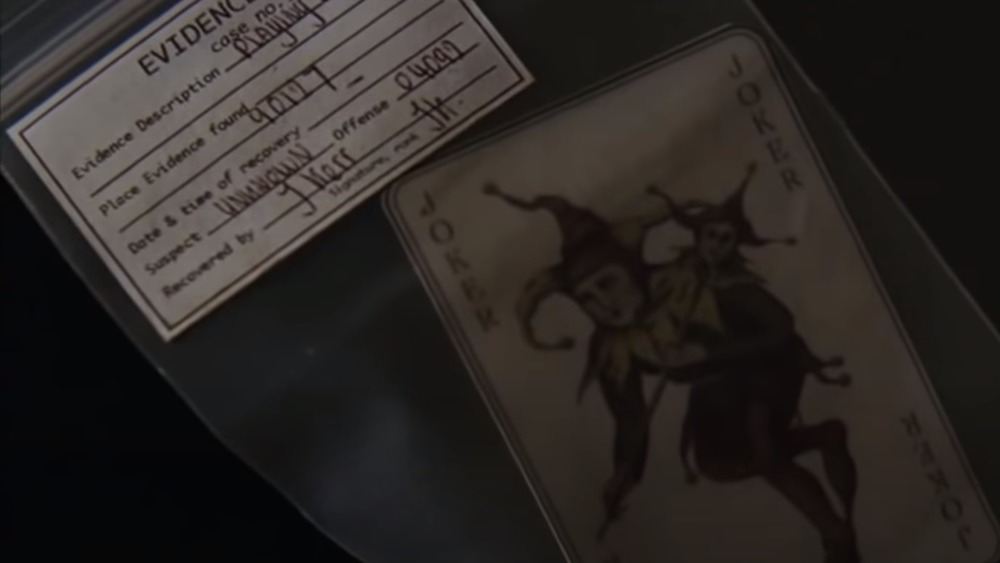The Ending Of Batman Begins Explained
Batman Begins was best described by Sir Michael Caine when he called it "a version of Batman, for the first time, who really does begin," the type of keen insight that should get any actor knighted. It was the motion picture that redefined a genre, eschewing Joel Schumacher-era nips and quips in favor of dingier fare. Batman Begins is a Batman movie that presents Bruce Wayne — played by Christian Bale — not as a cartoon character, but as a man traumatized by loss and maybe obsessed with animal cosplay. In his quest to become a force for justice, he travels to the side of a mountain and learns from the League of Shadows the most valuable skills a modern crime fighter can possess: sword fighting, hypothermia prevention, and how to spot Liam Neeson in a crowd while having a bad trip.
More than that, he personifies the moral code Katie Holmes' character, Rachel Dawson, slapped into him: killing is wrong, and he won't be a party to it, not even when goaded by the peer pressure of several dozen ninjas. Wayne expresses his refusal to take a life by burning down a building full of people, managing to save his mentor, Henri Ducard, and leaves him in the care of whichever locals were left after wads of flaming ninja meat tumbled down the mountainside and onto their village. His work complete and a kill order presumably out for him, Wayne returns to his native land of Gotham, picking up an assortment of niche body armor and gadgets along the way.
Batman Begins ends by beginning more Batman
Vigilantism ensues, and Wayne's neighborhood organized crime families are taken down a peg. What the hero could never suspect, however, is that the group of ninjas he'd been hanging out with just a few months prior had been planning a coup de grace the whole time. Claiming to have been responsible for all of society's great collapses across the centuries, they set in motion a new catastrophe, releasing an aerosol fear toxin into Gotham by introducing it to the water supply and then vaporizing it by means of a portable microwave weapon. It's a plan with a lot more moving parts than "put plague rats on a boat," but it's clear that they've been working on it for a while, so nobody mentions anything.
The biggest twist of all, however, comes when Batman discovers that the man who trained him was behind the skullduggery all along. A fight ensues, with Wayne crashing the "L" train that his father built in a moment both super cinematic and symbolic of his willingness to abandon the past. He won't kill Ducard, he reasons, but he doesn't have to save him, and suddenly the Randian logic of paying six-figure sums for personalized body armor in order to help those financially less fortunate than him really clicks into place.
In the end, as Michael Caine observed, Batman really does begin. He gets a personalized spotlight at the top of the Gotham Police Department building, starts reworking the Batcave, and, most importantly, nails the landing on a Joker tease for the next entry in the franchise. As Dark Knight trilogy movie endings go, it's not the one we deserved, but it was the one we needed in 2005.

